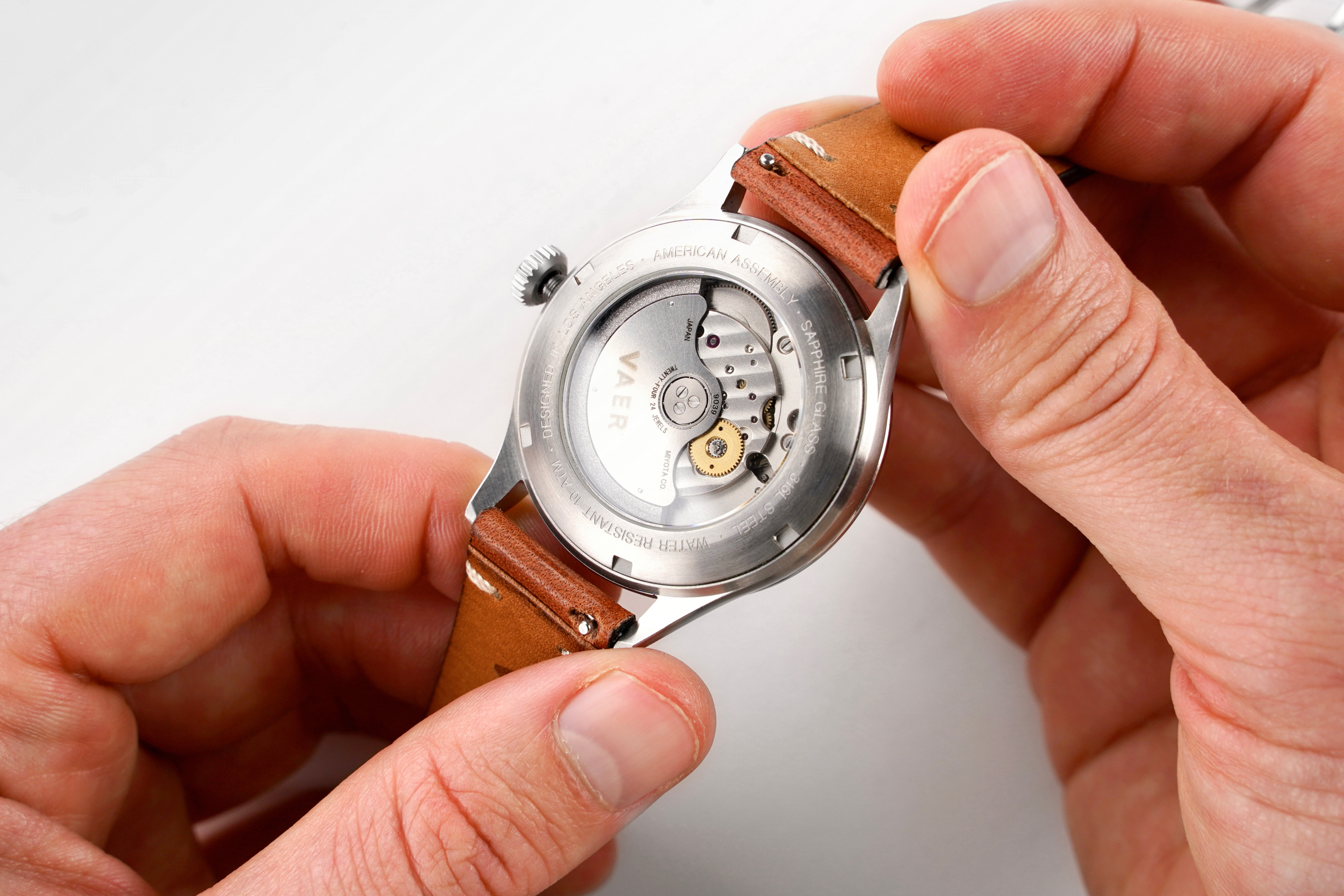What is an automatic watch?
 Updated
by Vaer Watches
Updated
by Vaer Watches
An automatic watch is another name for "self-winding" mechanical watch which is powered by kinetic energy rather than batteries.
While automatic movements are technically more dated technology than quartz movements, they're still often used in watches, because they carry a different degree of quality, craftsmanship, and complexity. Instead of batteries, they run off of the energy from a wound spring - this spring stores energy and distributes it through interconnected gears and springs, controlling the supply of energy to power the watch.
The mainspring is "charged" either through hand-winding or natural motion generated from user wear. In the case of charge through user wear, a rotor, driven by the motion of the wearer's arm, charges the spring.
- Reagan Cook, Vaer Co-Founder
Are Automatic Watches Objectively Better Than Quartz Watches?
While you may see this opinion in watch forums and comment sections, the short answer is... no! The go-to assumption for many consumers is that an automatic watch is simply "better" than all quartz watches because of it's complexity, craftsmanship, and cost. Ultimately, though, it all comes down to consumer preference and needs.
While most automatic watches may carry more mechanical complexity and cost significantly more than most quartz watches, they’re also less accurate by nature of the design. While a mechanical movement generally has an accuracy of +-10 seconds to +- 30 seconds per day, a quartz movement will have this same accuracy range (or better) over the course of an entire month. For those that are in the pursuit of ultimate timekeeping precision, a quartz watch is going to be the best choice.
Automatic watches also run on a "power reserve", which is essentially the amount of time the watch can continue to operate off the power generated by the winding of the movement. Most watches come in around a 40-hour reserve, which means that if the watch is not wound or worn for 40 hours, it will stop, therefore losing track of the time. A quartz movement, on the other hand, continues to tick as long as a battery is active - in our watches, this is 3-4 years per battery. Again, if you're looking for a reliable timekeeping instrument that keeps time without regular wear, then an automatic may not be the best choice.
Ryan Torres, Vaer Co-Founder
Despite the above, automatic watches are incredible feats of human engineering that deserve all the praise that they get. It’s an amazing thing to know that there is a machine on your wrist being powered by nothing more than natural motion. A machine that is capable of tracking time with micro gears and springs without the use of electricity is a fantastic thing. There’s also something to be said for the fact that an automatic watch is entirely “off the grid”. There are no batteries to die or satellites to connect to – it’s physical components working in perfect harmony to produce accurate time - this is amazing.
The movements used in Vaer mechanical watches can be powered by both hand-winding, as well as natural motion. In the case of natural motion, the energy generated by your motion is harnessed by a rotor in the watch movement, then stored in the mainspring.

